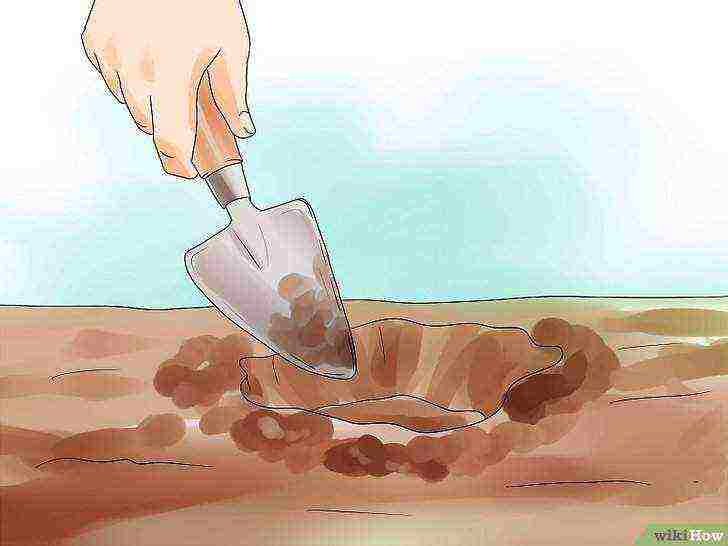Content

In fact, lilacs feel quite constrained if their roots do not have enough space. Therefore, if you decide to breed lilacs in a pot, keep in mind that the process may not go as smoothly as you would like. Sometimes pot bushes refuse to bloom at all. However, it's still worth a try.
Dwarf varieties of lilacs are suitable for growing in pots, such as: "Pixie", "Munchkin", "Little Miss Muffett", "Minuet", "Miss Kim", "Purple Gem".
A very important point is to choose the right flowerpot. It should be large (at least 60 cm wide and about 30 cm deep), as this will give more freedom to the roots, and also protect the plant from the effects of heat and cold. Do not buy containers made of black plastic, as it heats up quickly and can harm the root system. Place the pot in one place right away - after planting it will become heavy and inconvenient to move. Try to keep the area well lit: the lilacs should receive at least 6 hours of sunshine daily. Equip your home garden with fluorescent lights just in case.

Bush "Miss Kim" in a flowerpot
Lilac care in a pot
- When choosing a soil, remember that lilac loves alkaline soil and does not tolerate acidic ones. To even out the acid-base balance, add about 200 grams of limestone or, better, dolomite.
- Never water immediately after the soil is slightly dry on top. Lilac does not tolerate "swamps", so the optimal watering time is when the soil has dried to a depth of about 2-2.5 cm.
- Lilacs need cold, so never suddenly move the bush from the garden to the house in the autumn-winter period. In the cold season, arrange airing on the balcony - otherwise the kidneys simply will not ripen.
- Fertilizers are added to the container at the beginning of spring every year. The optimal formula is 10-10-10 (see the article on the composition of fertilizers)
- If you see the roots start to "jump" out of the flowerpot, arm yourself with a sharp knife and start removing 2.5 cm from each side of the root ball. You can also trim roots that are too thick with a garden scissors.
When it comes to pruning the crown, there is no solution for all cases. First, lilac grows more slowly at home than in the garden. Secondly, even without pruning the branches, the bush will feel good. However, decorative trimming will turn your balcony garden into an aesthetic place where you can relax your soul.
Lilacs are famous for the beauty of their flowers and a wonderful aroma, so many people want to plant it on their site. The tree will look great in the country or in the local area of urban buildings.
Not everyone knows how to grow lilacs from a twig. It is necessary to ensure that the plant takes over, does not hurt and pleases with its wonderful flowers. Read more about this in the article.
The advantage of grafting
Cutting lilacs has advantages over other options for obtaining ready-made bushes. When using seeds on their own, difficulties can arise, since they do not always germinate easily.

The purchase of seedlings leads to additional costs, so cutting lilacs will also be a profitable option. If you understand the intricacies of planting in other ways, you can choose any. Any method requires careful preparation and phasing. Don't forget about regular grooming.
Choosing a cutting
Before you learn how to grow lilacs from a twig, you should choose the right stalk - it depends on whether the shoot is accepted or not. The branch must be cut carefully. This should be done in early spring, when the cutting is not yet in active growth, otherwise it will be difficult for it to take root.
It is necessary to cut off green branches of medium thickness. A cutting from the crown of a young bush is perfect, preferably from the middle. It will be possible to grow a bush if there are 2-3 knots and small internodes on the branch. It is advisable to cut the cuttings in the early morning - they will take better.
Treatment
How to grow lilacs from a twig? How do you make the cutting take good start? To do this, it is necessary to process it with high quality: remove the leaves from the lower node, and then make an oblique cut with a sharp knife. It is advisable to use a grafting secateurs.

This must be done carefully so that a cut on the internodes does not turn out. Next, cut the leaf plates in half. Remove the top of the shoot completely with a straight cut. After that, the cutting can be used for planting.
Landing
So how to grow lilacs from a twig? After processing and pruning, the cutting should be dipped into the Epin-extra solution. After 16 hours, take it out and rinse it with clean water.
Next, we plant the cutting in enriched soil. The earth must be mixed with sand, peat or perlite in equal quantities and a branch should be placed in it so that the lower node is covered. Water immediately with a fungicide solution to protect the plant from fungus.
Watering
How to grow a bush from a lilac twig? For this, it is necessary to ensure high-quality watering. After planting, the plant must be sprayed with a spray bottle and then shaded.

Watering should be done 3-5 times a day for several weeks. This is necessary to ensure the desired moisture content. Every week, you need to spray a solution of potassium permanganate on the leaves to protect the plant from bacteria and fungi. Best covered with a bottle to maintain moisture.
Care
The plant requires quality care. Roots will appear on it after 2 months. After that, it is necessary to ventilate the plant, preferably in the evenings: remove the bottle from it for 1 hour.
The rooting of the plant occurs by autumn. If necessary, it can be transplanted to a place where there is a lot of light and fertile soil. Conditions can be improved by fertilizing the earth with compost, humus, wood ash.
Seeds
This option is suitable for species specimens, since the cultivation of lilacs by seeds entails the loss of the characteristics of the variety. The method is suitable for obtaining a rootstock. This option attracts breeders with the possibility of obtaining new varieties.

First, the seeds are stratified for 2 months at a temperature of + 2 ... + 5 ° C, and then sown in the spring in a soil mixture - peat and sand (2: 1). Germination time for all varieties is different, for example, for common lilac - 13-16 days.
After the formation of 4 leaves at the seedling, a pick is performed at a distance of 3-4 cm. In May, they can be planted in open ground, and by autumn they will adapt. With the first frost, the seedlings should be covered with a layer of peat 8-10 cm thick for the winter.
Growing lilacs can be done in other ways, for example, layering and budding. Each method has its own characteristics, but in all cases it is necessary to go through all the stages of preparation so that the plant is well accepted and grows healthy.
Tips
How to grow lilacs from a twig in a pot? The procedure is performed in the way described above, you just need to choose a container - it can be a plastic or ceramic pot. It is important to follow the sequence of actions, as with the classic landing, only then you can expect excellent results.
It is easier to grow in a greenhouse as the greenhouse effect creates ideal conditions. In addition, the moisture content is quite suitable for the root system. For the winter period, the plant must be covered with spruce branches. For several years, the bush should be loosened, weeded, be sure to add top dressing.Fertilizer can be compost and humus. Proper care ensures excellent growth and luxurious flowering.
3 methods: Planting lilacs Caring for lilacs Cutting and drying lilacs
Imagine, deeply inhaling, the mysterious scent of lilacs wafting through the curtain of a warm summer evening. Lilacs are not difficult to grow as long as you give them plenty of water and plant them in full sun. There are over 100 species of lilacs that grow like shrubs or trees and produce fragrant flowers. Read on to learn how to grow and care for lilacs.
Method 1 Planting lilacs
-
 Select lilac bushes for planting.
Select lilac bushes for planting.
Visit a nursery to select varieties of lilacs to plant. In addition to color, pay attention to the height of the mature plant. Some plants, such as Palibin and Superba lilacs, grow into 1 to 2 meter shrubs. Others, such as Surinda reticulata, grow 6-9 meter trees.
- You can purchase bare roots or container grown plants from a local nursery or by mail order from a plant supplier company. Your local garden center or nursery should be able to recommend lilac varieties that grow best in your area.
- You can also transplant seedlings - shoots purchased from a friend or neighbor. Dig up and transplant seedlings in the spring, as soon as leaf buds begin to form, or when small leaves appear. Choose seedlings that are at least 30 cm tall. Use a shovel to dig the seedlings out of the ground, grabbing as much of the root base as possible. Use a shovel to cut the shoots to separate the seedling from the mother plant.
-
 Choose a place to plant lilacs.
Choose a place to plant lilacs.
Lilacs need bright sunshine, so find a location that gets at least 6 hours of sun per day and that has good air circulation. Lilacs grown in humid stagnant air or without sufficient sunlight are prone to disease. Lilacs also need well-drained soil. If drainage is an issue, create a mound or raised bed before planting them.
- Avoid planting lilacs too close to a wall or tree. Lilac roots need room to grow.
-

Prepare the lilacs for planting. Soak the roots in warm water for 10-15 minutes. Use your fingers to shake off the root ball to gently separate the roots.
-
 Plan to plant lilacs in the spring or fall.
Plan to plant lilacs in the spring or fall.
Dig a hole deep enough in the soil to hide the roots. The base of the plant should be at ground level. After planting the lilacs in the pit, fill it halfway with soil, then water and fill the rest of the pit. Top up the soil flush with the natural expansion at the bottom of the base. Covering above this point can suffocate the roots and kill the plant.
- If the soil where you live is not very fertile, add compost, bone meal or fertilizer to the pit before planting the lilacs.
- Sprinkle lime over the soil above the lilac roots if you have acidic soil. Follow directions for use and repeat every 3-5 years. Lilacs prefer neutral to slightly acidic soil with a pH of 5 to 7.
- If you are planting more than one lilac bush, the space between the dug holes should be 2-5 meters apart, depending on which varieties you are planting.
Method 2 Lilac care
-

Keep the lilacs watered. Water several times a week throughout the summer, except when it rains heavily. Water deeply from the base of the plants and let the ground dry before watering again.
-

Fertilize lilacs in the spring. Use compost or balanced, all-purpose fertilizer every spring. Depending on the soil conditions, you can fertilize the lilacs again when the flowers begin to bloom.
-
 Prune lilacs regularly to increase flowering and air circulation.
Prune lilacs regularly to increase flowering and air circulation.
Prune the oldest, longest branches as close to the ground as possible.Prune branches in different areas of the lilac, including the center, to thin out the bush where necessary. Never remove more than 1/4 of the branches at a time.
- Remove diseased or damaged branches and side shoots growing upward from the base as soon as you find them.
- Cut off dead flowers to prevent seed formation.
- Prune the shrub again in the fall after flowering to form it, or remove branches that have few flowers.
Method 3 Cutting and drying lilacs
-

Cut the lilacs when the flowers are fully in full bloom. Cut them right at their peak when their color and aroma are strongest. This will ensure that they stay in your flower arrangement for a very long time. Place them immediately in a vase of clean water.
-
 Dry the lilacs by hanging upside down.
Dry the lilacs by hanging upside down.
Gather a bunch of freshly picked lilacs and tie them together with elastic bands. Hang it upside down in a cool, dark place for 1-3 weeks. Gently peel off the gum when the lilac is completely dry.
- Dry the lilacs using silica gel. Pour some silica gel into a large glass or plastic container. Place a few stalks of freshly picked lilacs in a container so that they sit in the gel. Fill the rest of the container with gel so that it completely covers the lilacs. Place the lid on the container and wait a week or so for the lilacs to dry. Take them out of their container and use them in a flower arrangement.
Tips
- Although the chances of success are extremely low, it is possible to propagate lilacs by taking a piece from a rooted bush. To increase your chances of success, try cutting off the growing top of a branch in early spring after buds have formed but before the leaves have bloomed. Place the end of the branch in the water to see if roots develop.
- Scatter ashes from a fireplace or campfire onto the soil around and under the lilac bushes to increase the size and number of flowers they produce.
Warnings
- Powdery mildew is a fungal disease that affects lilacs in late summer. The fungus does not directly harm the plant, but it reduces energy production and makes it look unsightly. A sunny spot with good air circulation will reduce the chances of catching powdery mildew. Fungicide is suitable as a preventive measure and must be applied before mold appears on the plant.
Article Information
This page has been viewed 12,744 times.
Was this helpful?
In late spring and summer, lilacs can be easily propagated at home using rooted green cuttings. In the article, we will tell you in detail and show how to do it correctly.
Lilacs of decorative varieties are propagated by shoots, layering, grafting and cuttings. To plant lilacs, you need to have some skills, and it is convenient to propagate a bush that is already growing in the country with shoots and layering. If you want to bring the plant from another place, it is best to resort to cuttings. Using this method, you can even root lilacs from a bouquet. Provided that it was cut no later than one day ago.
Also, keep in mind that lilacs are difficult to root. Therefore, for successful breeding, it is important to observe certain conditions:
- Do not miss the right time for harvesting cuttings. Green twigs of lilacs are cut during flowering or immediately after it, since lignified cuttings do not take root. And it's best to do it early in the morning.
- Use suitable cuttings. They need to be cut from the middle of the crown of young bushes (up to 6 years old) and from the middle part of the shoot. In this case, there must be 2-3 buds on the handle (10-15 cm long). Shoots coming from thick twigs (tops) are unsuitable.
- Withstand temperature and humidity conditions... The optimum temperature for rooting cuttings is 22-25 ° C, and the humidity is 85-95%.
The cuttings must be green
Preparing green cuttings
one.Use a sharp secateurs to remove the leaves from the lower knot of the cutting.
2. Make an oblique cut as close as possible to this knot without leaving a hemp. Note that internode cuttings do not take root.
Be very careful about making a cut on the handle: the roots of lilacs grow only in the area of the lower node. And the wrong cut will lead to the fact that the plants will not take root.
3. Cut all the leaves remaining on the cutting by half.
4. Above the top knot, stepping back 1 cm, cut off the top of the shoot. In this case, the cut must be even.
5. Place the prepared cuttings in a solution with a rooting stimulator.
The water temperature should be between 18-20 ° C. For this, you can use any drug, but, as our experiment has shown, it is more effective to use Epin-Extra. Keep the cuttings in the stimulant solution for 14-17 hours.
Rooting cuttings of lilac
1. Prepare the soil. It is best to root the cuttings in a mixture of peat (2 parts) and coarse-grained perlite (1 part). It is undesirable to add sand.
2. Pour a small layer of drainage into the cutter (or any other container with a plastic lid), and on top of it - the prepared soil mixture with a layer of 10 cm.
Then add a layer (3 cm) of coarse sand - preferably river sand.
3. Moisten the soil abundantly. To avoid infection with fungal diseases, you can spill the soil with a fungicide solution (Fundazol).
4. In wet sand, using a thin stick, make a small hole and place the cutting 1 cm deep in it. Make sure that the cutting cut is in the sand, but does not touch the soil mixture. Plant the rest of the cuttings so that they do not cling to each other with leaves.
5. Spray the cuttings from a spray bottle with water at room temperature.
6. Cover the container with a transparent plastic lid (you can use a cut plastic bottle) or plastic and place in partial shade.
Lilac cuttings care
Spray the cuttings with water daily to maintain moisture. The sand should not dry out. To prevent mold from forming on the leaves, spray them with a light pink solution of potassium permanganate once a week.
Blot the condensation as needed, and after the cuttings have formed, begin to ventilate.
Roots usually appear in 30-60 days. Until autumn, grow the cuttings in a cuttings (if they had time to take root by this time), and in September, plant them on a growing bed located in a well-lit place with light, fertile soil of neutral acidity, and then water. In this case, the distance between the cuttings should be about 30 cm.
If the leaves on the cuttings darken in the fall, do not worry. It is important that the buds and roots do not die out.
Cover the cuttings with spunbond or spruce branches for the winter. In the spring, with the onset of warm weather, remove the shelter. After 1-2 years, the lilac sapling can be transplanted to a permanent place. And after 2-3 years the plant will bloom.
As you can see, it is not difficult to grow lilacs from green cuttings. But at home, they usually take root only 50-70% of the time. Therefore, harvest a few lilac twigs.


